Pengpeng Chen
Harnessing Multiple Large Language Models: A Survey on LLM Ensemble
Feb 25, 2025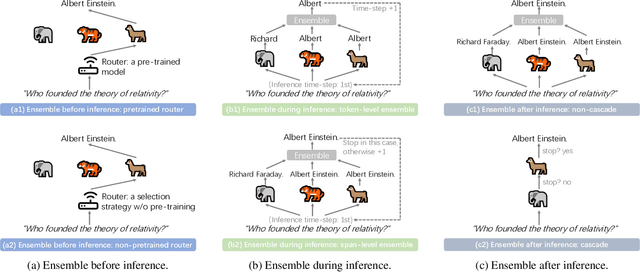

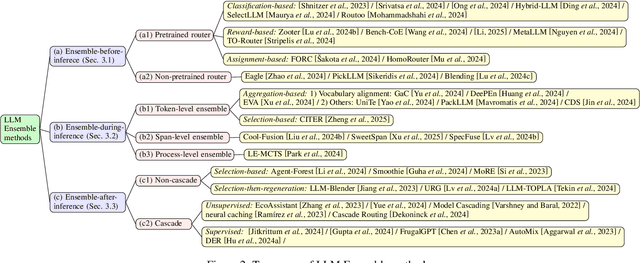

Abstract:LLM Ensemble -- which involves the comprehensive use of multiple large language models (LLMs), each aimed at handling user queries during downstream inference, to benefit from their individual strengths -- has gained substantial attention recently. The widespread availability of LLMs, coupled with their varying strengths and out-of-the-box usability, has profoundly advanced the field of LLM Ensemble. This paper presents the first systematic review of recent developments in LLM Ensemble. First, we introduce our taxonomy of LLM Ensemble and discuss several related research problems. Then, we provide a more in-depth classification of the methods under the broad categories of "ensemble-before-inference, ensemble-during-inference, ensemble-after-inference", and review all relevant methods. Finally, we introduce related benchmarks and applications, summarize existing studies, and suggest several future research directions. A curated list of papers on LLM Ensemble is available at https://github.com/junchenzhi/Awesome-LLM-Ensemble.
Neural-Hidden-CRF: A Robust Weakly-Supervised Sequence Labeler
Sep 28, 2023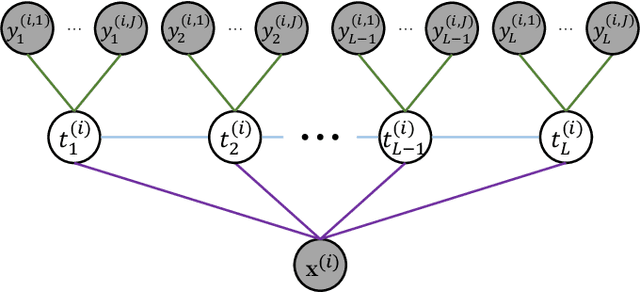
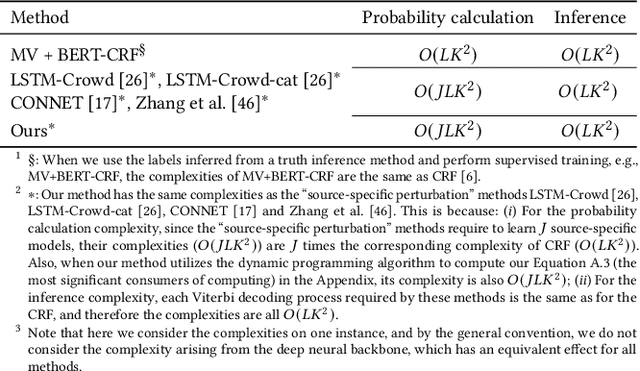

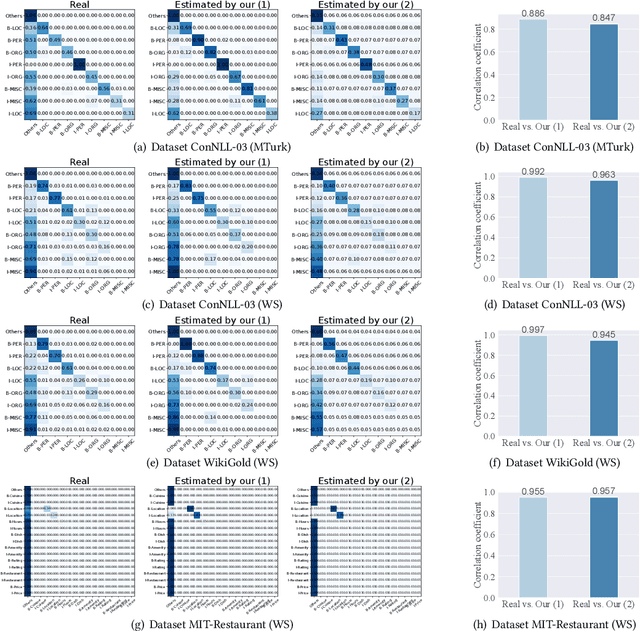
Abstract:We propose a neuralized undirected graphical model called Neural-Hidden-CRF to solve the weakly-supervised sequence labeling problem. Under the umbrella of probabilistic undirected graph theory, the proposed Neural-Hidden-CRF embedded with a hidden CRF layer models the variables of word sequence, latent ground truth sequence, and weak label sequence with the global perspective that undirected graphical models particularly enjoy. In Neural-Hidden-CRF, we can capitalize on the powerful language model BERT or other deep models to provide rich contextual semantic knowledge to the latent ground truth sequence, and use the hidden CRF layer to capture the internal label dependencies. Neural-Hidden-CRF is conceptually simple and empirically powerful. It obtains new state-of-the-art results on one crowdsourcing benchmark and three weak-supervision benchmarks, including outperforming the recent advanced model CHMM by 2.80 F1 points and 2.23 F1 points in average generalization and inference performance, respectively.
TSGCNeXt: Dynamic-Static Multi-Graph Convolution for Efficient Skeleton-Based Action Recognition with Long-term Learning Potential
Apr 23, 2023



Abstract:Skeleton-based action recognition has achieved remarkable results in human action recognition with the development of graph convolutional networks (GCNs). However, the recent works tend to construct complex learning mechanisms with redundant training and exist a bottleneck for long time-series. To solve these problems, we propose the Temporal-Spatio Graph ConvNeXt (TSGCNeXt) to explore efficient learning mechanism of long temporal skeleton sequences. Firstly, a new graph learning mechanism with simple structure, Dynamic-Static Separate Multi-graph Convolution (DS-SMG) is proposed to aggregate features of multiple independent topological graphs and avoid the node information being ignored during dynamic convolution. Next, we construct a graph convolution training acceleration mechanism to optimize the back-propagation computing of dynamic graph learning with 55.08\% speed-up. Finally, the TSGCNeXt restructure the overall structure of GCN with three Spatio-temporal learning modules,efficiently modeling long temporal features. In comparison with existing previous methods on large-scale datasets NTU RGB+D 60 and 120, TSGCNeXt outperforms on single-stream networks. In addition, with the ema model introduced into the multi-stream fusion, TSGCNeXt achieves SOTA levels. On the cross-subject and cross-set of the NTU 120, accuracies reach 90.22% and 91.74%.
Learning from Noisy Crowd Labels with Logics
Feb 14, 2023Abstract:This paper explores the integration of symbolic logic knowledge into deep neural networks for learning from noisy crowd labels. We introduce Logic-guided Learning from Noisy Crowd Labels (Logic-LNCL), an EM-alike iterative logic knowledge distillation framework that learns from both noisy labeled data and logic rules of interest. Unlike traditional EM methods, our framework contains a ``pseudo-E-step'' that distills from the logic rules a new type of learning target, which is then used in the ``pseudo-M-step'' for training the classifier. Extensive evaluations on two real-world datasets for text sentiment classification and named entity recognition demonstrate that the proposed framework improves the state-of-the-art and provides a new solution to learning from noisy crowd labels.
 Add to Chrome
Add to Chrome Add to Firefox
Add to Firefox Add to Edge
Add to Edge